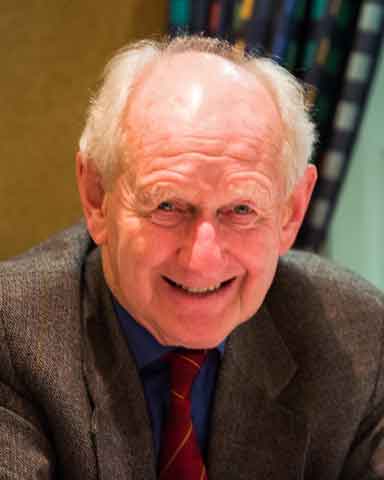
Phil Westwell at the 2013 AGM on 16th March 2013.

Philip did 2 years of National Service in 1952-54, following 4 of years of training in civil engineering. He was posted to 5352 Airfield Construction Wing at Oldenburg, which was responsible for the development and maintenance of all RAF units in the northern half of the British zone of Germany, to meet operational needs. He served on detachment to RAF Jever for 12 months, during which "retardation measures" were installed under the runway to facilitate total destruction, if needed.
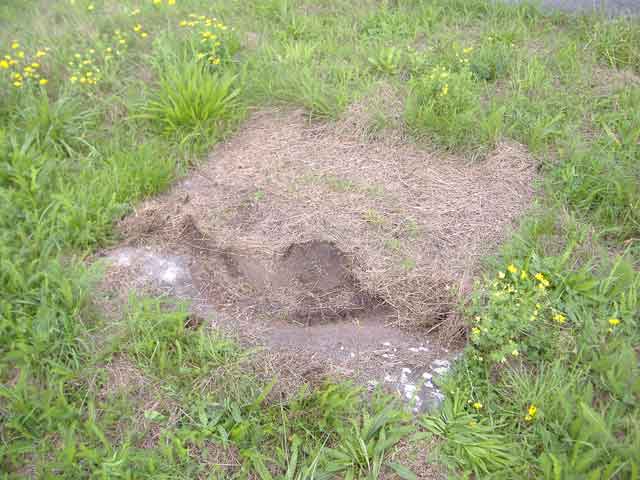
After the runway was complete they needed a way of denying the runway to Warsaw Pact forces should Jever be overrun. These were known as "Retardation Measures". Every 100 yards down the runway a German contractor bored a hole across the 50 yard width of the concrete. See the next picture of this being done. The runway, because of the extremes in the weather in North Germany, had been laid on an unusually thick layer of sand, about 1 metre, to provide excellent drainage and to avoid waterlogging and freezing. The hole was about at the level of the bottom of the sand layer. On either side they built a brick chamber about 8 ft by 5 ft and about 6ft deep. Each one had a manhole cover on the top and one such cover was found by Philip and is shown in the picture. The plan was to allow a man in each chamber to feed Bangalore torpedoes, (a form of mine 4 ft long by 8 inches in diameter), into the tube. To span the runway would take about 30 to 40 torpedoes in each tube. Ahlhorn was also equipped with these measures. (Thanks to Philip Westwell.)
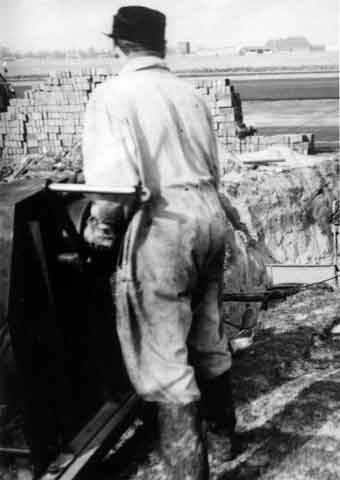
This photograph shows a German contractor using a thrusting/boring machine to drive a hole across the width of the runway which is the other side of the pile of bricks. The hole boring end of the machine can be seen at the far bottom of the sand trench. The bricks were to line the chamber at the end of the hole on either side of the runway. The tube was loaded with Bangalore Torpedoes from these chambers.
(Thanks to Philip Westwell.)

During his time there
Sabre jets arrived, resulting in the hasty provision of a non-skid runway surface and the preparation of a scheme to extend the 2,000 yards runway by 700 yards.

The runway had been constructed to Fighter Command standards, and the arrival of
Sabres demonstrated that 2000 yards was insufficient for these heavier machines with higher landing speed. The Air Ministry issued a specification for a non-skid asphalt surface, to be laid with minimal interference to flying.
Philip built a rail spur to bring in the raw materials, and set up an asphalt mixing plant on the hard standing in front of the maintenance hangars.
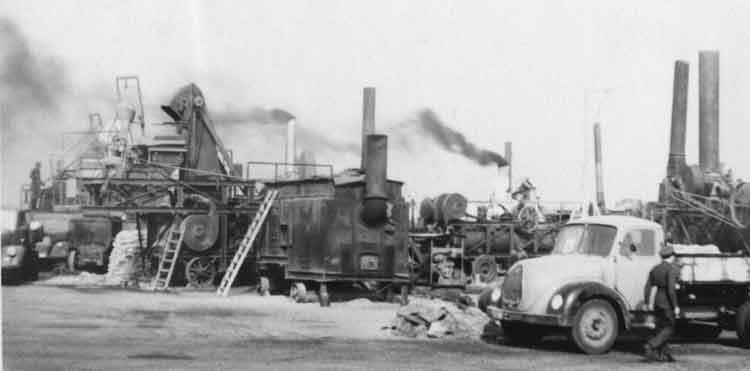
Asphalt Plant making the new surface for the runway. (Thanks to Philip Westwell.)
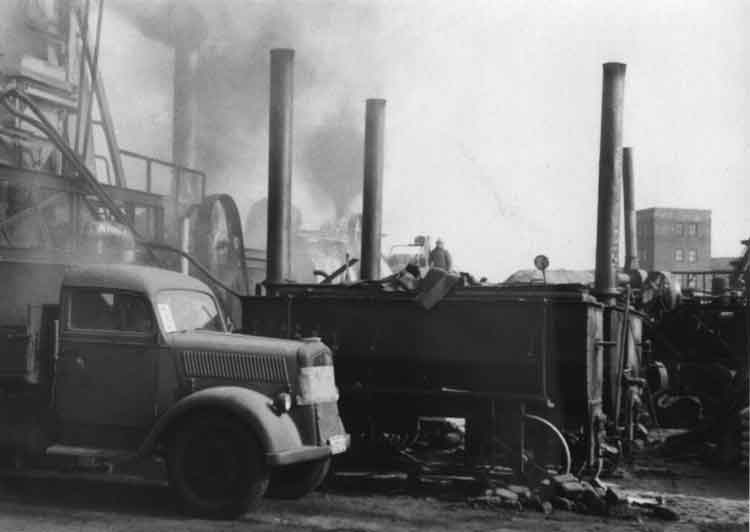
Another shot of the Asphalt Plant in which the East Tower of Hangar 4 can be seen. (Thanks to Philip Westwell.)
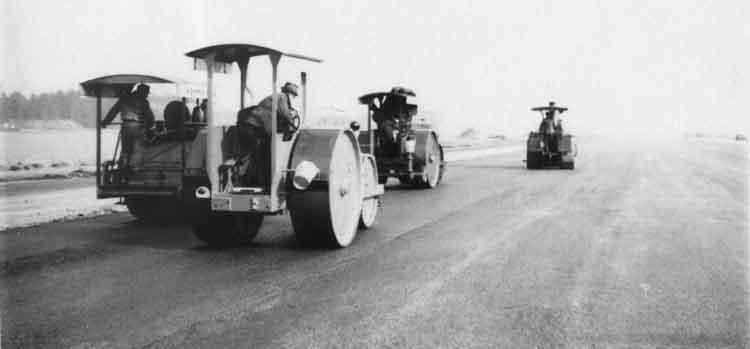
German Contractor's Steam Rollers laying the new runway surface. (Thanks to Philip Westwell.)
 The asphalt, laid within a 14 day period, was so successful that the Sabre tyres endured no more than 3 or 4 landings, and it was rumoured that 2 TAF tyre stocks were approaching exhaustion! The decision was then made to prepare plans for a 700 yard extension.
The asphalt, laid within a 14 day period, was so successful that the Sabre tyres endured no more than 3 or 4 landings, and it was rumoured that 2 TAF tyre stocks were approaching exhaustion! The decision was then made to prepare plans for a 700 yard extension.





